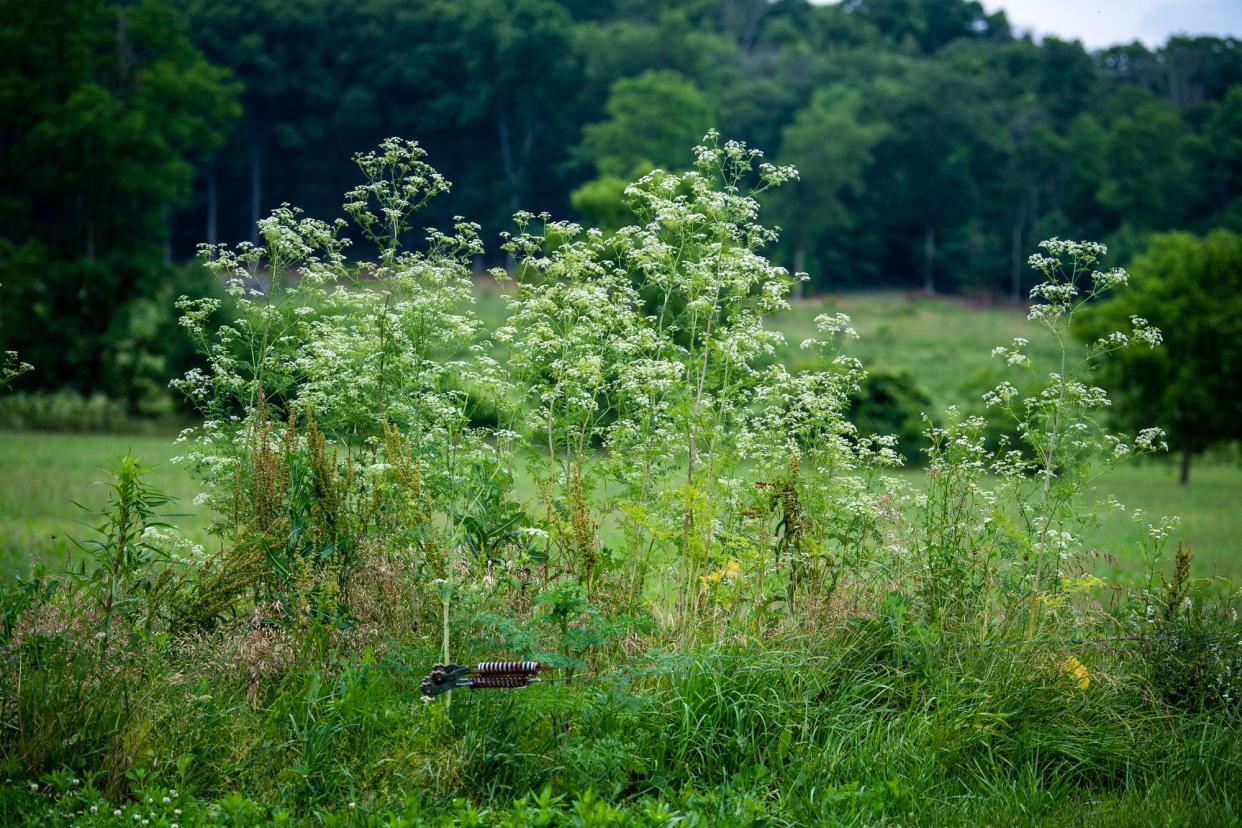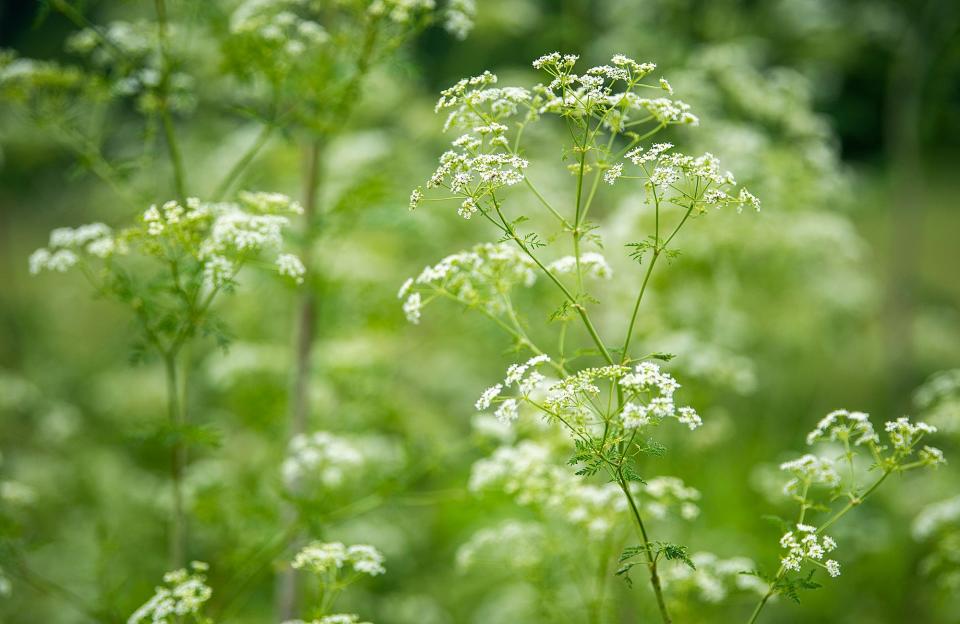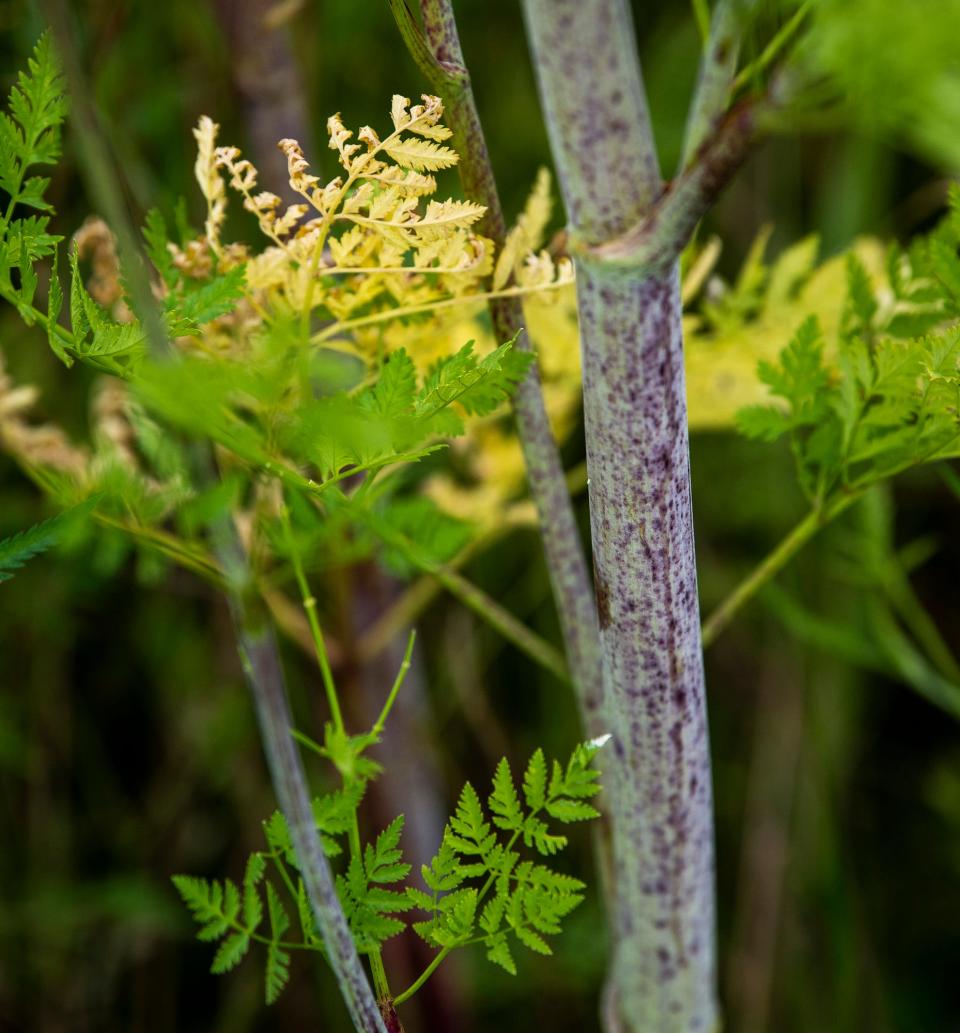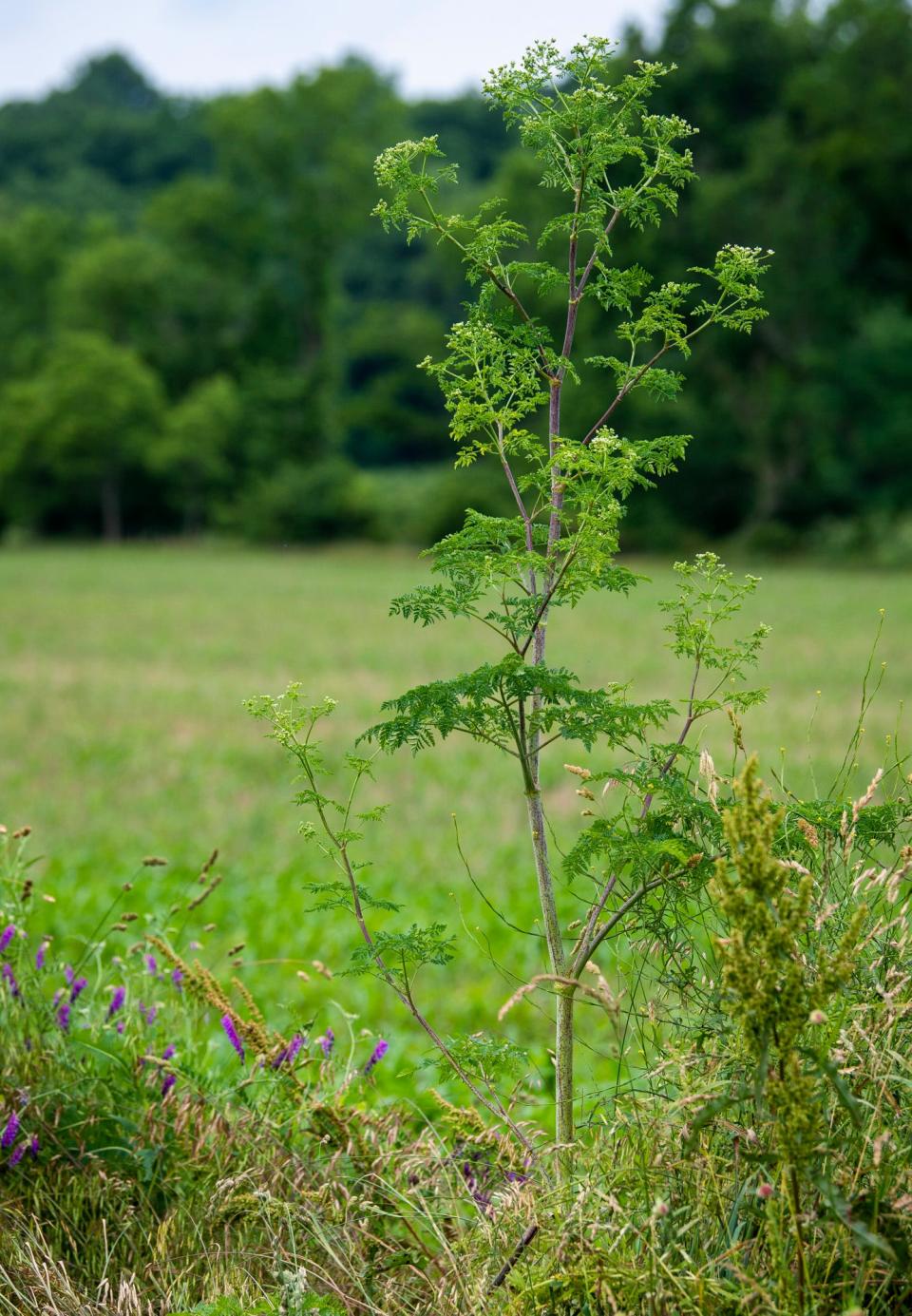It killed Socrates: This plant is flowering now and it can cause serious burns

There's something more dangerous than ticks in Indiana and elsewhere. It's a feathery-leafed plant with white flowers that looks deceptively pretty as it blooms along roadways and at the edges of fields across the Hoosier state.
But poison hemlock truly is poisonous — from roots to leaves to flowers and it's toxic to both animals and people. Just a slight touch of the flower or stem is enough to cause second- or third-degree chemical burns that bubble up and burst for a month or more.
Andrew Reuter, assistant director of Indiana's Division of Nature Preserves, knows all too well about those burns. Wearing gloves and a long-sleeved shirt while weed-eating a cluster of poison hemlock on a state property, he had a small area near his wrist exposed.
"It looked like a second-degree burn," he said of what the plant's toxins did to his skin. He had big blisters that easily ruptured and left painful, open sores. After multiple weeks of healing, Reuter had scars that were visible for months.

"I'll never go into a patch and think I'm going to weed-eat it again," he said. "It's not something you want to mess with. It's not something you want to ingest."
Reuter said anyone who plans to hand-pull the plants should wear personal protective equipment. He said the plants can be cut and sprayed during certain times of the year, but by the time people see the white flowers blooming, it's too late.
How to get rid of poison hemlock
The best time to locate and eradicate poison hemlock plants is during the first year when they are low-lying green plants that grow in a rosette. It's in the plant's second year that it grows a tall, hollow stem with umbrella-shaped clusters of white flowers that bloom in June and July. After the plant's flowers die back, the seeds mature and fall to the ground, creating clusters of the plant that grow in following years. Although the seeds aren't spread by birds or other wildlife, they can be distributed by mowing and agricultural machinery.
Although poison hemlock is found throughout Indiana every year, Matt Kraushar, a roadside maintenance specialist with the Indiana Department of Transportation, said this year the plant seems to be more prevalent than most. He attributes that to favorable fall, winter and spring conditions that have allowed the plants to thrive. "A mild winter, particularly in terms of temperature, is going to result in less winter mortality," he wrote in an email.
Unwanted: 10 invasive species to watch out for across Indiana
For Kraushar and others eradicating poison hemlock by mowing or string-trimming, possible inhalation or ingestion of sap or plant parts is a major safety concern. Medical issues also can happen if sap from the plant enters through an open cut or a person wipes some of the sap into their eyes, nose or mouth. Because of that, INDOT recommends its workers not only wear protective clothing, but also wash their hands with soap and water after potential contact.
Oftentimes it takes more than one time of mowing or cutting to eradicate poison hemlock. The plant has a large taproot that sends up new shoots after a single mowing. Purdue University and other agencies recommend chemical removal if there's a large area and when the plant is growing, before flowering. First-year plants can be sprayed midsummer through fall. It's now too late in the year to chemically treat second-year plants.
Once flowers appear, Kraushar recommends leaving the plant alone to minimize potential contact and exposure. He said most of the plant's seeds will fall close to the current plant if left undisturbed. Then those areas can be flagged and treated after the plant dies back later in the year.
Another invasive: Watch out for jumping worms! They are bad for the soil, your garden and the environment
Help with identifying poison hemlock

Poison hemlock is a member of Apiaceae (parsley) family and is a bi-annual plant, meaning it takes two years for it to complete its biological cycle and flower. The first year, plants are low to the ground and form a rosette with leaves resembling parsley. This plant is as poisonous as a second-year plant.
In the second year, poison hemlock grows hollow stems that can reach 3-10 feet in height with clusters of small white flowers that form umbrella-shaped clusters. The stems are light green with purple splotches. More information about poison hemlock can be found on the Purdue invasive plant series website, https://tinyurl.com/3xnzte9m, which includes photos of other similar-looking plants, including wild carrot (Queen Anne's lace) and cow parsnip. After poison hemlock flowers, its fruit turns grayish-brown.
Monroe County Identify and Reduce Invasive Species (MC-IRIS) is a local group that works to educate about and eradicate invasive species. Its members can help identify plant species.
Reporting locations of poison hemlock

Anyone who discovers poison hemlock can report where it is located at the Invasive and Exotic Species of North America website, www.invasive.org. The site has information about an app for professionals to record where invasive plants and animals are located as well as an invasive plant atlas for the U.S.
Bloomington has a U-Report system to report infestations of invasive plants: https://bloomington.in.gov/ureport/. In Indiana, the Southern Indiana Cooperative Invasives Management (SICIM), at www.sicim.info, is a nonprofit group that works to control invasive species.
Anyone who sees poison hemlock along state roadways can contact INDOT at indot4u.com or call 855-INDOT4U (463-6848).
The Indiana Invasive Species Council encourages people to document locations of invasive species at https://www.eddmaps.org/indiana. The data is used to inform many agencies and furthers the understanding of a species.
FYI: This is what killed Socrates
The most famous person killed by poison hemlock is Socrates. His death in 399 BCE was due to drinking a concoction of poison hemlock, according to a report by Plato. Socrates was killed after he was found guilty by a jury of 501 Athenians for charges of impiety and corrupting youth in Athens.
Contact Carol Kugler at ckugler@heraldt.com, 812-331-4359 or @ckugler on Twitter.
This article originally appeared on The Herald-Times: Poison hemlock causes second, third-degree burns, is flowering now

